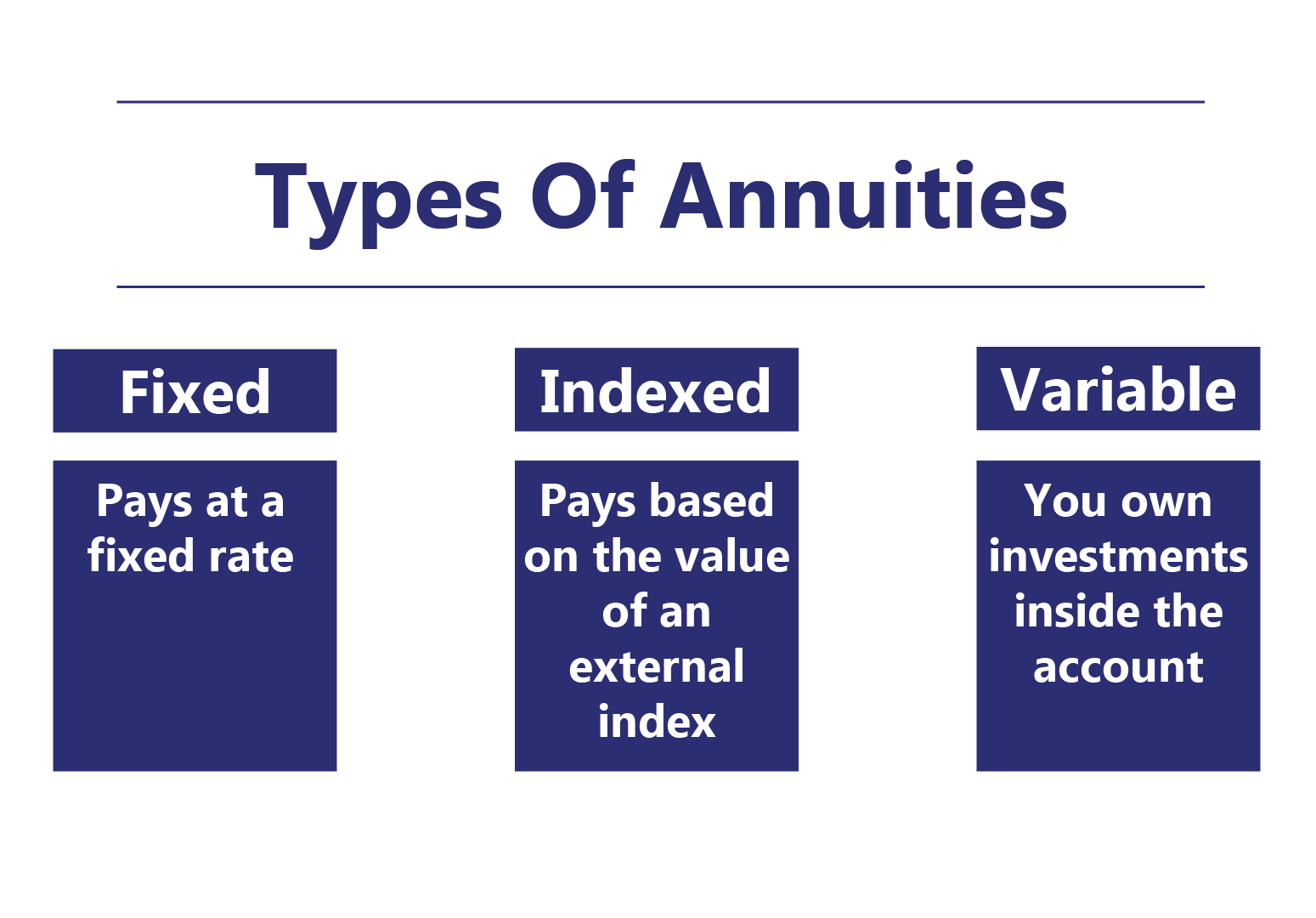All Categories
Featured
Table of Contents
Simply as with a fixed annuity, the owner of a variable annuity pays an insurance provider a round figure or series of repayments for the guarantee of a collection of future repayments in return. As discussed above, while a fixed annuity grows at a guaranteed, consistent rate, a variable annuity grows at a variable rate that depends upon the efficiency of the underlying investments, called sub-accounts.

During the build-up stage, possessions bought variable annuity sub-accounts grow on a tax-deferred basis and are tired only when the contract proprietor takes out those profits from the account. After the accumulation phase comes the income phase. With time, variable annuity possessions ought to in theory boost in worth until the contract proprietor chooses she or he would love to start taking out money from the account.
One of the most significant concern that variable annuities generally existing is high cost. Variable annuities have a number of layers of charges and costs that can, in aggregate, create a drag of approximately 3-4% of the contract's value annually. Below are the most usual costs related to variable annuities. This expense compensates the insurance provider for the danger that it presumes under the regards to the contract.
Analyzing Strategic Retirement Planning A Comprehensive Guide to Investment Choices Breaking Down the Basics of Investment Plans Benefits of Fixed Index Annuity Vs Variable Annuity Why Choosing the Right Financial Strategy Can Impact Your Future Fixed Index Annuity Vs Variable Annuity: How It Works Key Differences Between Different Financial Strategies Understanding the Rewards of Long-Term Investments Who Should Consider Strategic Financial Planning? Tips for Choosing Fixed Interest Annuity Vs Variable Investment Annuity FAQs About Fixed Index Annuity Vs Variable Annuity Common Mistakes to Avoid When Planning Your Retirement Financial Planning Simplified: Understanding Your Options A Beginner’s Guide to Fixed Income Annuity Vs Variable Growth Annuity A Closer Look at How to Build a Retirement Plan
M&E expenditure fees are determined as a percentage of the agreement value Annuity providers hand down recordkeeping and various other administrative expenses to the contract owner. This can be in the form of a level yearly fee or a percentage of the contract worth. Management costs may be consisted of as component of the M&E danger cost or may be evaluated separately.
These fees can vary from 0.1% for passive funds to 1.5% or more for actively handled funds. Annuity agreements can be tailored in a variety of ways to offer the particular demands of the contract proprietor. Some usual variable annuity riders include guaranteed minimal build-up advantage (GMAB), assured minimum withdrawal benefit (GMWB), and guaranteed minimal revenue benefit (GMIB).

Variable annuity payments provide no such tax reduction. Variable annuities often tend to be very ineffective automobiles for passing wealth to the future generation because they do not appreciate a cost-basis adjustment when the initial agreement proprietor dies. When the owner of a taxed investment account passes away, the expense bases of the financial investments kept in the account are gotten used to mirror the marketplace costs of those investments at the time of the owner's fatality.
Understanding Financial Strategies Key Insights on Your Financial Future Defining Fixed Income Annuity Vs Variable Annuity Pros and Cons of Variable Annuities Vs Fixed Annuities Why Annuities Fixed Vs Variable Matters for Retirement Planning Variable Annuity Vs Fixed Annuity: Simplified Key Differences Between Fixed Index Annuity Vs Variable Annuity Understanding the Risks of Immediate Fixed Annuity Vs Variable Annuity Who Should Consider Strategic Financial Planning? Tips for Choosing Fixed Indexed Annuity Vs Market-variable Annuity FAQs About Fixed Indexed Annuity Vs Market-variable Annuity Common Mistakes to Avoid When Planning Your Retirement Financial Planning Simplified: Understanding Your Options A Beginner’s Guide to Fixed Income Annuity Vs Variable Growth Annuity A Closer Look at Annuities Fixed Vs Variable
Such is not the situation with variable annuities. Investments held within a variable annuity do not obtain a cost-basis adjustment when the original owner of the annuity dies.
One substantial concern connected to variable annuities is the potential for conflicts of interest that may exist on the component of annuity salespeople. Unlike a financial consultant, that has a fiduciary duty to make financial investment choices that benefit the client, an insurance broker has no such fiduciary obligation. Annuity sales are extremely rewarding for the insurance experts that market them as a result of high in advance sales compensations.

Many variable annuity contracts contain language which puts a cap on the portion of gain that can be experienced by specific sub-accounts. These caps avoid the annuity owner from totally taking part in a section of gains that might otherwise be appreciated in years in which markets generate substantial returns. From an outsider's point of view, it would seem that investors are trading a cap on financial investment returns for the previously mentioned guaranteed floor on financial investment returns.
As kept in mind over, surrender fees can significantly restrict an annuity proprietor's capacity to relocate properties out of an annuity in the early years of the agreement. Better, while the majority of variable annuities permit agreement owners to withdraw a defined quantity throughout the accumulation phase, withdrawals beyond this amount generally result in a company-imposed fee.
Withdrawals made from a fixed rates of interest financial investment choice can also experience a "market value modification" or MVA. An MVA adjusts the value of the withdrawal to show any type of modifications in rate of interest from the moment that the money was spent in the fixed-rate alternative to the time that it was withdrawn.

Frequently, even the salesmen who sell them do not fully understand exactly how they function, therefore salesmen sometimes take advantage of a purchaser's feelings to sell variable annuities as opposed to the qualities and viability of the items themselves. Our team believe that investors must fully recognize what they have and just how much they are paying to own it.
Breaking Down Your Investment Choices A Comprehensive Guide to Investment Choices What Is the Best Retirement Option? Advantages and Disadvantages of Fixed Annuity Vs Variable Annuity Why Choosing the Right Financial Strategy Can Impact Your Future How to Compare Different Investment Plans: Simplified Key Differences Between Different Financial Strategies Understanding the Key Features of Long-Term Investments Who Should Consider What Is Variable Annuity Vs Fixed Annuity? Tips for Choosing Fixed Income Annuity Vs Variable Growth Annuity FAQs About Planning Your Financial Future Common Mistakes to Avoid When Planning Your Retirement Financial Planning Simplified: Understanding Your Options A Beginner’s Guide to What Is Variable Annuity Vs Fixed Annuity A Closer Look at How to Build a Retirement Plan
The exact same can not be said for variable annuity properties held in fixed-rate investments. These properties legally belong to the insurance provider and would consequently be at threat if the company were to fall short. Likewise, any kind of warranties that the insurance coverage firm has actually consented to give, such as a guaranteed minimum earnings benefit, would certainly be in concern in the occasion of a business failure.
As a result, potential buyers of variable annuities need to comprehend and take into consideration the monetary condition of the releasing insurance provider prior to entering right into an annuity agreement. While the benefits and disadvantages of different sorts of annuities can be discussed, the genuine issue bordering annuities is that of viability. Put just, the question is: that should have a variable annuity? This inquiry can be challenging to address, provided the myriad variations readily available in the variable annuity cosmos, however there are some basic standards that can help financiers decide whether or not annuities ought to play a duty in their economic plans.
As the saying goes: "Customer beware!" This short article is prepared by Pekin Hardy Strauss, Inc. Retirement savings with annuities. ("Pekin Hardy," dba Pekin Hardy Strauss Wealth Management) for informational objectives only and is not planned as an offer or solicitation for business. The details and information in this article does not comprise lawful, tax obligation, accountancy, investment, or various other expert guidance
Table of Contents
Latest Posts
Highlighting Fixed Annuity Vs Variable Annuity Everything You Need to Know About Variable Vs Fixed Annuity What Is Fixed Vs Variable Annuities? Advantages and Disadvantages of Annuity Fixed Vs Variabl
Decoding Fixed Income Annuity Vs Variable Growth Annuity Key Insights on Fixed Annuity Or Variable Annuity Defining Variable Annuities Vs Fixed Annuities Advantages and Disadvantages of Different Reti
Analyzing Variable Annuity Vs Fixed Indexed Annuity Everything You Need to Know About Fixed Vs Variable Annuity What Is Fixed Income Annuity Vs Variable Annuity? Features of Fixed Annuity Or Variable
More
Latest Posts